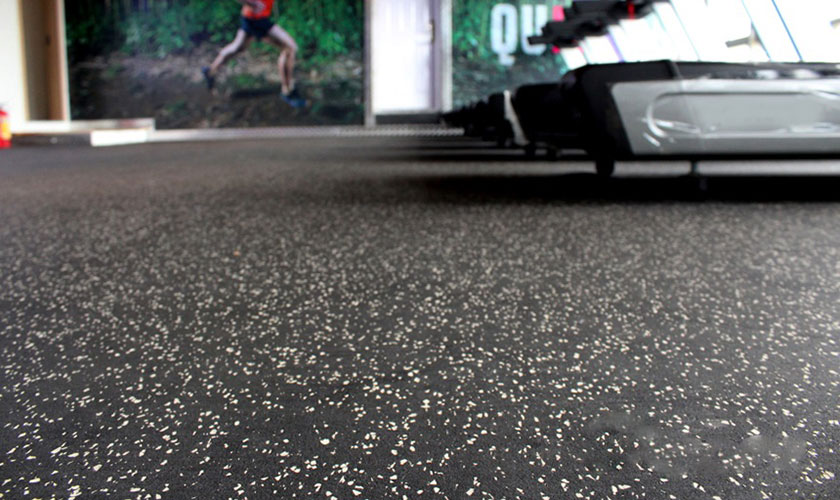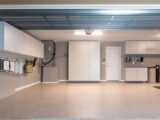
Rubber Flooring A Durable and Versatile Choice for Modern Spaces
April 11, 2025Introduction
Rubber flooring has become an increasingly popular choice for both residential and commercial spaces due to its durability, resilience, and aesthetic appeal. Whether in gyms, schools, hospitals, or even homes, rubber flooring provides a practical and stylish solution for various environments. This article explores the benefits, types, installation process, and maintenance tips for Rubber Flooring Dubai
Benefits of Rubber Flooring
Durability and Longevity
One of the standout features of rubber flooring is its incredible durability. It can withstand heavy foot traffic, impacts, and general wear and tear, making it ideal for high-traffic areas like gyms, offices, and industrial spaces.
Slip Resistance
Safety is a major concern in any space, and rubber flooring provides excellent slip resistance. This makes it a preferred option in places where the risk of slipping is high, such as kitchens, hospitals, and fitness centers.
Comfort and Shock Absorption
Unlike hard flooring materials like tile or concrete, rubber flooring offers a cushioned surface that absorbs impact. This makes it comfortable to walk or stand on for long periods, reducing strain on joints and muscles.
Noise Reduction
Rubber flooring helps to minimize noise, making it an excellent choice for spaces that require a quieter environment, such as offices, libraries, and multi-story buildings.
Water and Stain Resistance
Rubber flooring is resistant to water and most stains, making it easy to clean and maintain. This feature is particularly useful in areas prone to spills, such as kitchens and bathrooms.
Eco-Friendly Option
Many rubber flooring options are made from recycled materials, such as old tires, making them an environmentally friendly choice. Additionally, rubber flooring is long-lasting, reducing the need for frequent replacements and minimizing waste.
Types of Rubber Flooring
Rubber Tiles
Rubber tiles are available in various sizes, colors, and designs, allowing for customization. They are easy to install and replace, making them a great choice for DIY projects or modular flooring solutions.
Rubber Rolls
Rubber rolls provide seamless flooring with fewer joints, making them ideal for large spaces like gyms, warehouses, and industrial areas. They offer a uniform look and enhanced durability.
Interlocking Rubber Mats
Interlocking rubber mats are designed for quick and easy installation. These mats are popular in gyms, playgrounds, and home workout areas, providing cushioning and shock absorption.
Rubber Flooring with Textured Surfaces
Textured rubber flooring adds an extra layer of slip resistance and style. It is commonly used in wet areas such as swimming pool decks, showers, and commercial kitchens.
Installation Process
Installing rubber flooring can be a straightforward process, but proper preparation is crucial for achieving the best results. Here are the general steps involved:
Surface Preparation
Ensure that the subfloor is clean, dry, and level. Any dust, dirt, or moisture can affect the adhesion of the rubber flooring.
Measuring and Cutting
Measure the area carefully and cut the rubber flooring to fit the space. Use a utility knife or a specialized cutting tool for precision.
Laying the Flooring
For tiles and interlocking mats, simply place them in position and lock them together. For rubber rolls, roll out the flooring and allow it to settle before securing it in place.
Adhesive Application (if required)
Some rubber flooring options require adhesive for a more permanent installation. Apply the adhesive evenly and press the rubber flooring firmly into place.
Finishing Touches
Trim any excess material and ensure all seams are properly aligned. Allow time for the adhesive to set before using the flooring.
Maintenance and Care
Rubber flooring is low maintenance, but proper care can extend its lifespan and keep it looking great.
Regular Cleaning
Sweep or vacuum the flooring regularly to remove dust and debris. A damp mop with mild detergent can be used for deeper cleaning.
Avoid Harsh Chemicals
Strong chemicals and abrasive cleaners can damage rubber flooring. Stick to pH-neutral cleaners to maintain its integrity.
Prevent Scratches and Dents
Although rubber is durable, dragging heavy furniture or using sharp objects can cause damage. Use protective pads under furniture legs to prevent dents.
Address Stains Promptly
Although rubber flooring is stain-resistant, spills should be cleaned up promptly to avoid discoloration or residue buildup.
Applications of Rubber Flooring
Rubber flooring is a versatile option used in various settings:
Gyms and Fitness Centers: Provides shock absorption, slip resistance, and durability.
Schools and Playgrounds: Offers cushioning to protect children from falls.
Hospitals and Healthcare Facilities: Ensures a hygienic, slip-resistant surface.
Commercial and Industrial Spaces: Withstands heavy foot traffic and equipment loads.
Residential Spaces: Used in home gyms, kitchens, and basements for comfort and durability.
Conclusion
Rubber flooring is a smart and versatile choice for both residential and commercial applications. Its durability, safety features, and low maintenance requirements make it an excellent investment. Whether you’re looking for an eco-friendly flooring solution, a cushioned surface for high-impact activities, or a stylish option for modern interiors, rubber flooring delivers on all fronts. With proper installation and care, Flooring Dubai can provide years of reliable performance and aesthetic appeal.







